Gluten Check Tool
Check for Hidden Gluten
Enter a product name to see if it might contain hidden gluten sources. This tool uses data from the article to highlight potential risks.
Most people think going gluten-free means just skipping bread, pasta, and cookies. But here’s the thing: gluten hides in places you’d never expect. You could be eating it every day without realizing it - and if you have celiac disease or a serious sensitivity, that’s not just a minor mistake. It’s a health risk.
Condiments Are the Biggest Culprits
Soy sauce? Teriyaki? Salad dressings? These are the silent gluten bombers. Regular soy sauce is made with wheat. Even if the label says "low sodium" or "natural," it’s still likely made with wheat unless it specifically says "tamari" or "gluten-free soy sauce." Tamari is usually safe, but not always - check the label. Same goes for bottled salad dressings. Many use malt vinegar or wheat-based thickeners. A 2023 study by the Celiac Disease Foundation found that nearly 1 in 5 store-bought dressings contained hidden gluten, even those marketed as "healthy" or "organic."
Even ketchup? Yes. Some brands use wheat-derived vinegar or add maltodextrin from wheat. It’s not common, but it happens. The only way to be sure? Read the ingredients list. If you see "malt," "wheat starch," or "modified food starch" without a source, assume it’s not safe.
Medications and Supplements
You wouldn’t think your daily vitamin or pain reliever contains gluten, but it does - sometimes. Pills and capsules often use starch as a binder. Corn starch? Fine. Wheat starch? Not fine. Many generic medications don’t list gluten on the label because the FDA doesn’t require it. That means you can’t trust the front of the bottle. You have to call the manufacturer or check their website. A 2024 survey by the Gluten Intolerance Group found that 32% of people with celiac disease accidentally ingested gluten from medication at least once in the past year.
Supplements are even trickier. Protein powders, collagen pills, and even probiotics can contain gluten. Some brands use wheat germ oil or barley-derived enzymes. If you’re taking supplements for health reasons, you’re probably being extra careful with your diet. Don’t let your pills undo all that work.
Canned and Processed Foods
Think canned beans? Safe. Canned soups? Not always. Many canned soups use wheat flour as a thickener. Even "clear" broths can contain gluten. Same with canned tuna - some brands add flavorings or stabilizers that include wheat. Frozen meals? A minefield. Pre-packaged rice sides? Often contain seasoning packets with maltodextrin or hydrolyzed wheat protein.
Here’s a real example: a popular brand of canned black beans listed "natural flavors" as an ingredient. Turns out, those flavors came from a wheat-based stock. The company didn’t change the label. The only way to catch it? You had to dig into their customer service FAQ.
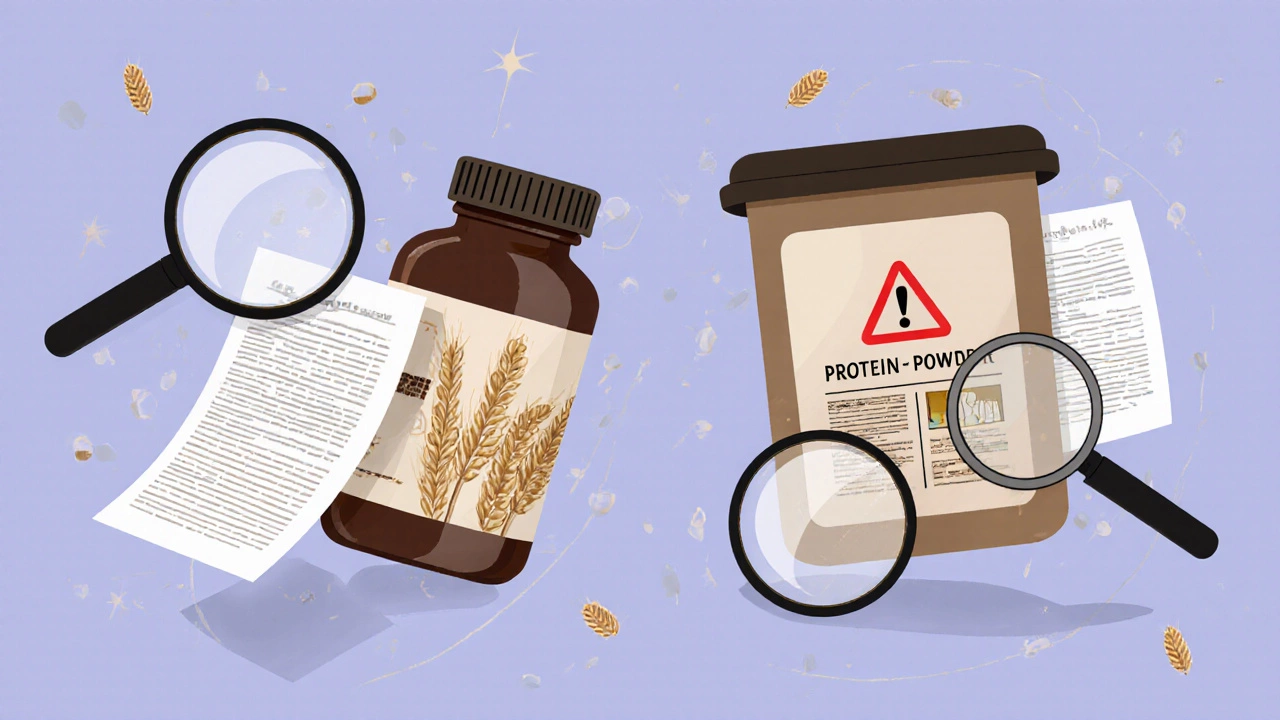
Meat, Poultry, and Seafood
Plain, fresh meat? Gluten-free. But anything that’s been breaded, marinated, injected, or glazed? Not anymore. Many grocery stores sell pre-marinated chicken breasts, pork tenderloins, or salmon fillets with sauces that contain soy sauce, Worcestershire sauce, or malt vinegar - all common gluten sources.
Even deli meats can be risky. Some are coated in flour to help smoke adhere, or they’re injected with broth that contains wheat derivatives. Sliced turkey from the deli counter? If the same slicer is used for regular sandwich bread, cross-contamination happens. That’s why many celiac patients only buy pre-packaged meats labeled "gluten-free."
And don’t forget sausages. Hot dogs, bratwurst, Italian sausage - many use breadcrumbs or wheat-based fillers. Even if they say "all meat," check the fine print. A 2025 analysis by Consumer Reports found that 18% of "premium" sausages contained gluten.
Alcohol and Beverages
Beer? Obviously not gluten-free - made from barley. But what about wine? Most wine is safe. However, some cheaper wines use wheat-based fining agents to clarify the liquid. It’s rare, but it happens. Same with some ciders and flavored alcoholic drinks.
Flavored coffee? Watch out. Many syrups and creamers contain maltodextrin from wheat. Even some plain instant coffees are processed in facilities that handle wheat. If you’re sensitive, stick to plain, unflavored coffee beans and grind them yourself. Same goes for tea - some herbal teas include barley or wheat-based flavorings.
And here’s one no one talks about: communion wafers. If you’re Catholic or attend a church that uses traditional communion, those wafers are made from wheat. Some churches offer gluten-free alternatives now, but not all. If you’re attending a service and need to avoid gluten, call ahead.
Cosmetics and Personal Care
Yes, gluten can be in your lipstick, toothpaste, or shampoo. It’s not absorbed through the skin in significant amounts, but if you lick your lips after applying lipstick or accidentally swallow toothpaste, that’s a problem. Many lip balms and lipsticks contain wheat germ oil. Some toothpastes use barley malt or wheat starch as a thickener. Even hand soap can have wheat proteins.
It’s not a big risk for most people, but if you have celiac disease and are prone to mouth sores or digestive flare-ups after using certain products, it’s worth switching to gluten-free brands. Look for labels that say "gluten-free" or check the manufacturer’s website for ingredient sourcing.
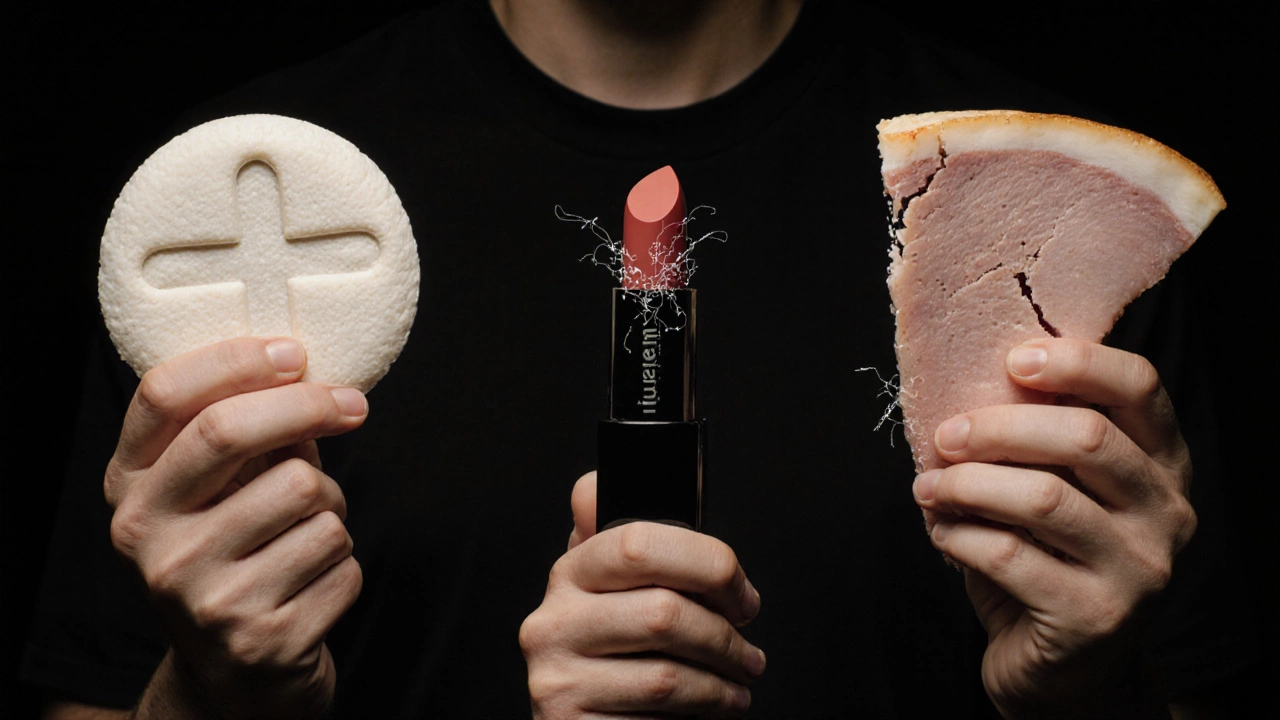
How to Stay Safe
Here’s what actually works:
- Always read ingredient lists - not just "gluten-free" claims.
- Learn the sneaky names for gluten: malt, hydrolyzed wheat protein, wheat starch, modified food starch (if source isn’t listed), dextrin (unless specified as corn), and brewer’s yeast.
- When in doubt, contact the company. Most have customer service lines that can confirm gluten content.
- Buy certified gluten-free products when possible. Look for the GFCO or NSF Gluten-Free logo.
- Keep a food and symptom journal. If you’re having unexplained reactions, track everything you eat, drink, and apply to your skin.
There’s no perfect system. Even certified gluten-free products can sometimes be contaminated during processing. But being aware of these hidden sources cuts your risk by more than half.
What to Do If You’ve Been Accidentally Exposed
If you accidentally eat something with gluten, don’t panic. But do act. Drink water. Rest. Avoid processed foods for the next 24 hours - your gut is already stressed. If you have celiac disease, symptoms can last days. Some people get bloating. Others get brain fog or joint pain. If you’re unsure whether it was gluten, track your symptoms. If it happens often, talk to your doctor. You might need a blood test to check for ongoing damage.
And if you’re not diagnosed but suspect gluten sensitivity, don’t self-diagnose. Get tested before cutting out gluten. Once you stop eating it, tests become unreliable.
Is all soy sauce not gluten-free?
No, not all soy sauce contains gluten. Regular soy sauce does because it’s made with wheat. But tamari is typically gluten-free - just make sure the label says so. Some brands make gluten-free soy sauce using only soybeans and salt. Always check the ingredients.
Can I trust "gluten-free" labels on packaged foods?
Yes, but only if they’re certified. In the U.S., the FDA requires products labeled "gluten-free" to contain less than 20 parts per million of gluten. But certification programs like GFCO test for cross-contamination, which is where most exposure happens. Look for the GFCO or NSF logo for extra safety.
Do oats contain gluten?
Oats themselves don’t contain gluten, but they’re often processed in facilities that handle wheat, barley, or rye. That means cross-contamination is common. Only eat oats labeled "certified gluten-free." Regular oats can trigger reactions in people with celiac disease.
Is maltodextrin gluten-free?
In the U.S., maltodextrin is almost always made from corn, potato, or rice - even if the name sounds like it comes from malt. But if the label doesn’t specify the source, contact the manufacturer. In some countries, maltodextrin can be made from wheat. Always check.
Can gluten be in vitamins and supplements?
Yes. Many pills use wheat starch as a binder. Even if the supplement claims to be "natural" or "organic," it might still contain gluten. Always check with the manufacturer or look for supplements labeled "gluten-free." Some brands specialize in gluten-free vitamins.
Final Thought: It’s Not About Perfection - It’s About Awareness
You don’t have to be a gluten detective 24/7. But if you’re avoiding gluten for health reasons, you need to know where it hides. The biggest danger isn’t the obvious stuff. It’s the stuff you assume is safe. Once you start checking labels, reading ingredient lists, and asking questions, you’ll find that most hidden gluten sources are easy to avoid. It’s not about fear. It’s about control. And with a little attention, you can eat safely - even when the food doesn’t look like it’s hiding anything.
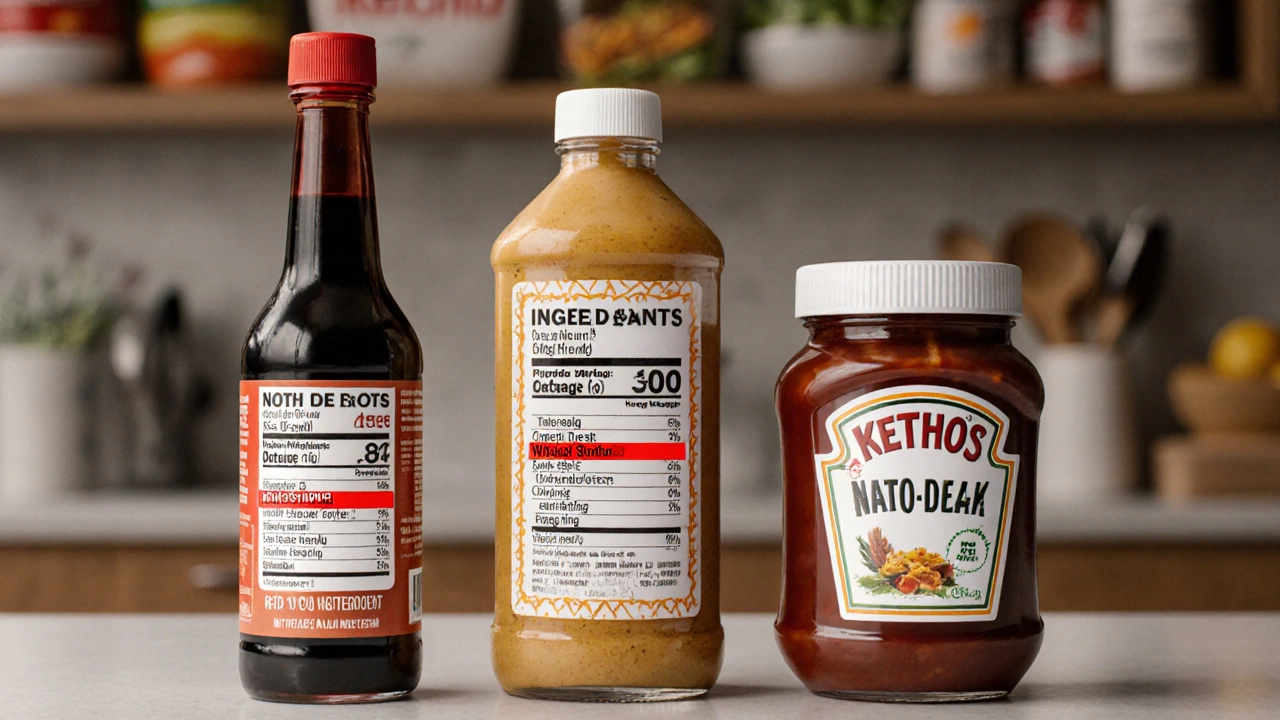

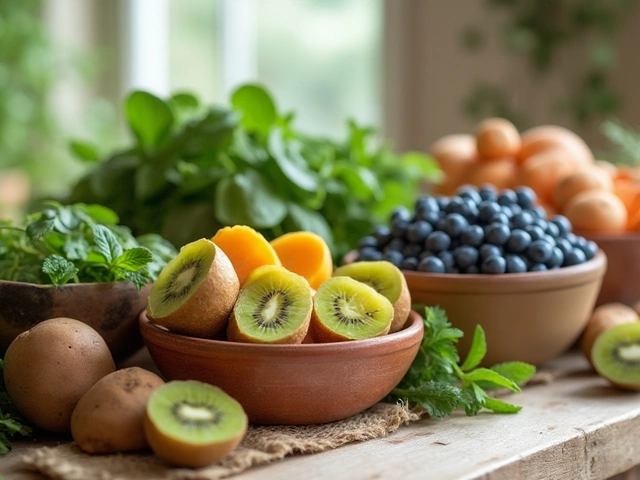




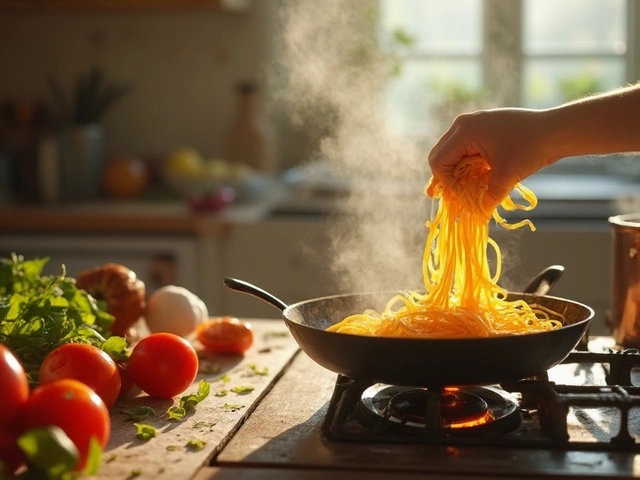

Write a comment